Creating a Crash/Memory Dump
There will be some cases that the Technical Support staff will request a memory dump from you to help diagnose the cause of the issue.
Automatically generated Crash/Memory Dump
Manually creating a crash/memory dump file using Task Manager
A crash or memory dump file will be automatically generated when the XSplit Broadcaster or XSplit VCam app crashes or abruptly closes unintentionally.
Locate your app's CrashDump folder by going to these directories in Windows File Explorer:
XSplit Broadcaster's CrashDump folder will be in this directory: %ProgramData%\XSplit\Broadcaster\
XSplit VCam's CrashDump folder will be in this directory: %ProgramData%\XSplit\VCam\
You can enter these addresses on the address bar on Windows File Explorer.
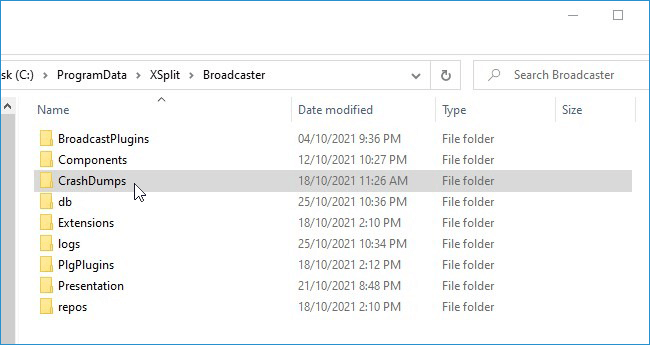
Check the contents of the CrashDump folder to verify that the dump files were generated:
For XSplit Broadcaster, the dump files will be named XSplit.Core.exe.(number).dmp.
For XSplit VCam, the dump files will be named XSplitVCam.exe.(number).dmp.
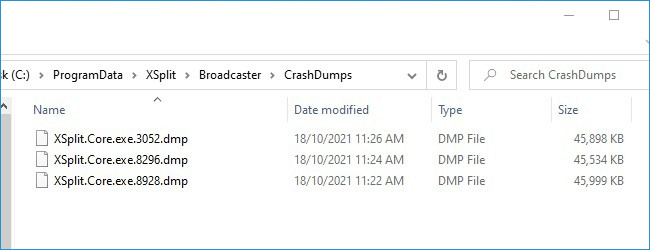
Go back to the directory where the CrashDump folder is located. You will need to compress this folder into a .zip file so it will be easier to send to the Support Team.
Windows 10: Right-click on the CrashDump folder, go to Send to then select Compressed (zipped) folder.
Windows 11: Right-click on the CrashDump folder, then select Compress to ZIP file.
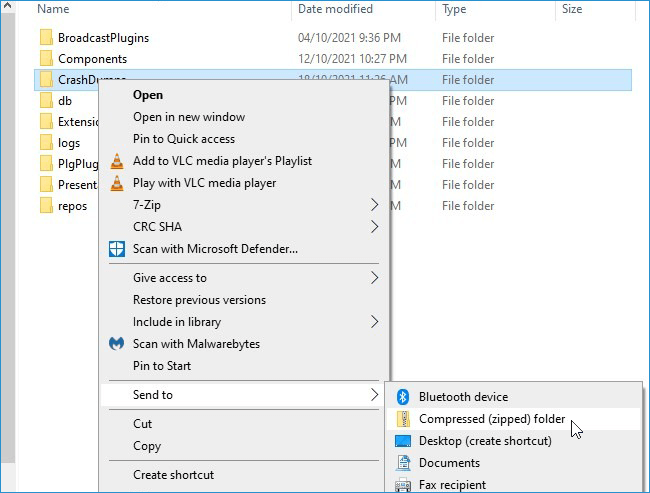
Reproduce the issue/crash on the XSplit application that you are using.
Go to Start > Run or press the Windows Key + R on your keyboard.
On the Run prompt, type taskmgr, hold down the Ctrl and Shift keys then click OK to run it as an administrator.

On the Details tab, look for your XSplit app process then right-click on it and select Create Dump File.
For XSplit Broadcaster, look for the XSplit.Core.exe process.
For XSplit VCam, look for the XSplitVCam.exe process.
On Windows 8 and 10, you may need to click on More Details to show this view.
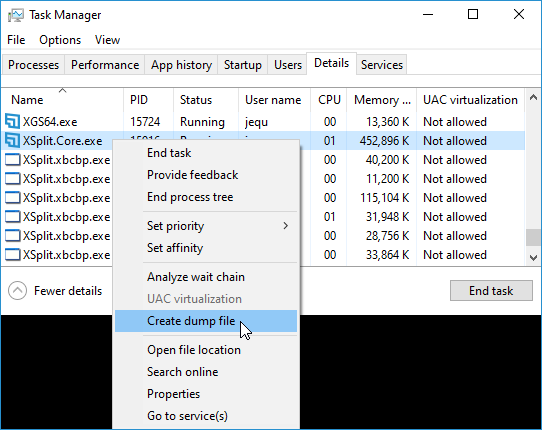
A dialogue box will appear with the location of the saved dump file. Click OK and close Task Manager.
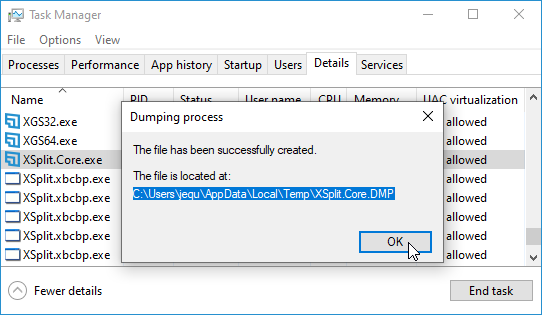
You can find the saved dump file on %AppData%\Local\Temp location.
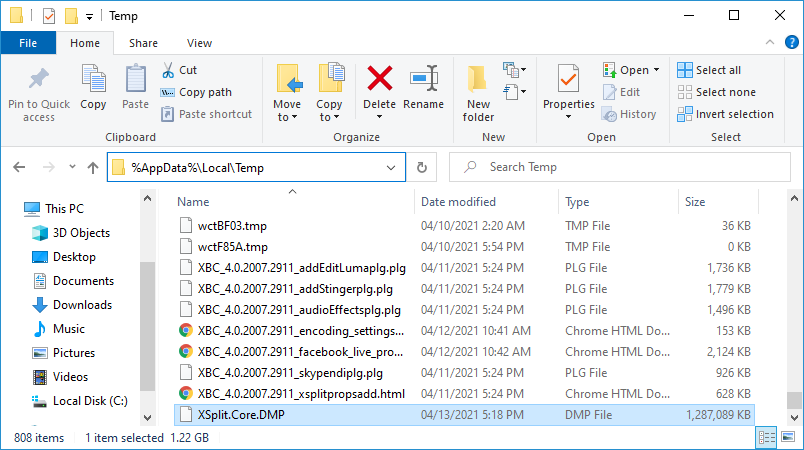
The created dump file will be too large to attach through email or the Support chat window. Compress the dump file to a .ZIP/.RAR file then upload it to a file-sharing service such as Dropbox or Google Drive.
Send the file sharing download link to Support.
Automatically generated Crash/Memory Dump
Manually creating a crash/memory dump file using Task Manager
Automatically generated Crash/Memory Dumps
A crash or memory dump file will be automatically generated when the XSplit Broadcaster or XSplit VCam app crashes or abruptly closes unintentionally.
Locate your app's CrashDump folder by going to these directories in Windows File Explorer:
XSplit Broadcaster's CrashDump folder will be in this directory: %ProgramData%\XSplit\Broadcaster\
XSplit VCam's CrashDump folder will be in this directory: %ProgramData%\XSplit\VCam\
You can enter these addresses on the address bar on Windows File Explorer.

Check the contents of the CrashDump folder to verify that the dump files were generated:
For XSplit Broadcaster, the dump files will be named XSplit.Core.exe.(number).dmp.
For XSplit VCam, the dump files will be named XSplitVCam.exe.(number).dmp.

Go back to the directory where the CrashDump folder is located. You will need to compress this folder into a .zip file so it will be easier to send to the Support Team.
Windows 10: Right-click on the CrashDump folder, go to Send to then select Compressed (zipped) folder.
Windows 11: Right-click on the CrashDump folder, then select Compress to ZIP file.

Manually creating a crash/memory dump file using Task Manager
Reproduce the issue/crash on the XSplit application that you are using.
Go to Start > Run or press the Windows Key + R on your keyboard.
On the Run prompt, type taskmgr, hold down the Ctrl and Shift keys then click OK to run it as an administrator.

On the Details tab, look for your XSplit app process then right-click on it and select Create Dump File.
For XSplit Broadcaster, look for the XSplit.Core.exe process.
For XSplit VCam, look for the XSplitVCam.exe process.
On Windows 8 and 10, you may need to click on More Details to show this view.

A dialogue box will appear with the location of the saved dump file. Click OK and close Task Manager.

You can find the saved dump file on %AppData%\Local\Temp location.

The created dump file will be too large to attach through email or the Support chat window. Compress the dump file to a .ZIP/.RAR file then upload it to a file-sharing service such as Dropbox or Google Drive.
Send the file sharing download link to Support.
Updated on: 07/11/2023
Thank you!